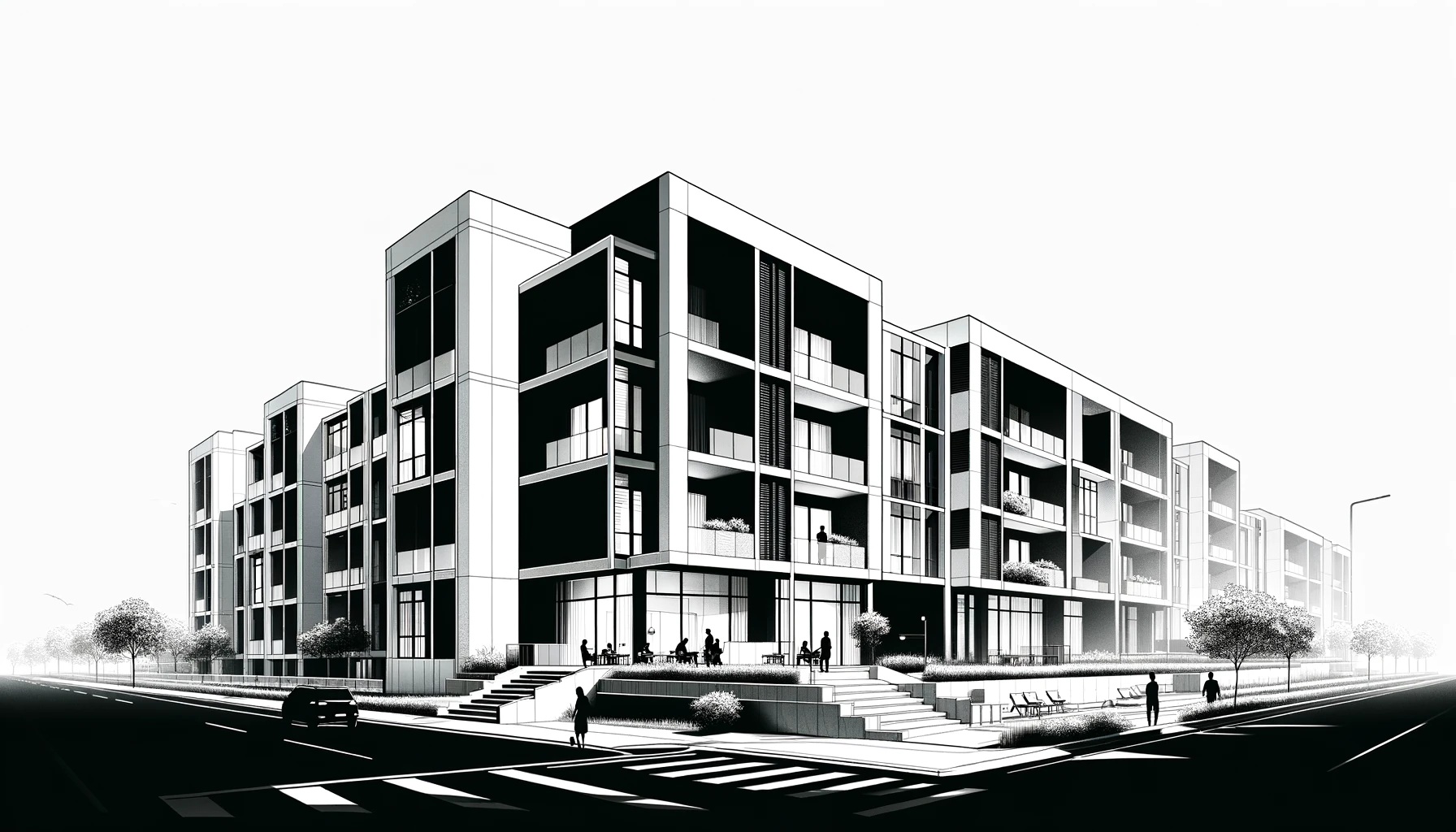Google Ads can be a highly effective way for apartment communities to generate leads and lease up units. With millions of people searching on Google every day, running targeted ads allows you to get your apartments in front of prospective renters at the exact moment they are searching for a new place to live. However, setting up and optimizing apartment Google Ads campaigns requires understanding the unique aspects of marketing in the multifamily industry.
Why Use Google Ads for Apartments
There are several key reasons why Google Ads is an excellent channel for apartment marketing:
- Reach prospects with high intent. When someone searches for “apartments in [city]” or “1 bedroom apartments near me”, they are likely actively looking for a new apartment. Showing your ad puts your community right in front of them when they have high intent to take action.[5]
- Geo-targeting capabilities. Apartments are an inherently local product. Google Ads allows you to target your campaigns only to people searching in relevant zip codes, cities, or a radius around your property. You can focus your ad spend on only the most qualified local traffic.[4][5]
- Ability to control budget and cost-per-lead. With Google Ads, you only pay when someone clicks your ad. You can set daily budgets and maximum cost-per-click amounts to keep spend under control. Tracking leads and conversions then allows you to optimize for the keywords and ads driving the lowest cost leads.[3]
- Faster than SEO. While ranking organically in Google’s search results is valuable, it can take many months to improve SEO. Google Ads allows you to get to the top of the page for relevant searches immediately.[2]
Setting Up Apartment Google Ads Campaigns
To get started with Google Ads for your apartment community, you’ll need to set up a Google Ads account if you don’t already have one. Then follow these steps:
1. Determine Your Target Locations
Decide which geographic areas you want to target. This could be certain zip codes, cities, counties, or a radius around your property address. The key is to only target areas you would consider in your local market to avoid wasting ad spend.[4][5]
2. Identify Relevant Keywords
Brainstorm a list of keywords a prospective renter may search when looking for an apartment like yours. Use the Google Ads Keyword Planner tool to get search volume and competition data. Focus on long-tail, apartment-related terms like:
- “1 bedroom apartments in [city]”
- “[neighborhood] 2 bedroom apartments”
- “pet friendly apartments near me”
- “luxury studio apartments [city]”
Avoid broad terms like “apartments” or “rentals” that will likely drive a lot of irrelevant traffic.[1][2]
3. Write Compelling Ad Copy
Your ad copy needs to concisely convey your unique value proposition while including the keywords you are targeting. Customize the headline and description for each ad group. Use language that will resonate with your target renter. Highlight things like:
- Number of bedrooms/bathrooms
- Desirable apartment or community features
- Neighborhood or location
- Move-in specials or pricing
- Compelling calls-to-action like “Schedule a Tour” or “Check Availability”[1][4]
4. Set Up Relevant Ad Extensions
Ad extensions provide additional information and links to help your ad stand out. Key extensions for apartments include:
- Sitelinks – links to specific pages like floor plans, amenities, photo gallery
- Callouts – highlight key selling points like “spacious layouts” or “resort-style pool”
- Structured snippets – list out apartment or community features
- Call extensions – add a phone number prospects can click-to-call
- Location extension – show your address and a map pin[2][4]
5. Create Targeted Landing Pages
Where you send prospects after they click your ad is just as important as the ad itself. Create unique landing pages for each ad group focused on that theme. The landing page should provide relevant information and have a clear call-to-action like a contact form, phone number, or schedule tour button. Sending all traffic to your homepage will result in lower conversion rates.[1][2]
Optimizing Apartment Google Ads for Performance
Setting up your campaigns is just the first step. To maximize performance, you need to continually monitor and optimize your apartment Google Ads. Here are some of the most important things to look at.
Adjust Bids Based on Performance
Look at which keywords and ads are driving the most clicks and conversions at the lowest cost-per-lead. Increase bids on those terms to get more impressions and clicks. Reduce bids or pause keywords that are driving a lot of clicks but not converting.[1][3]
Add Negative Keywords
Review the actual search terms triggering your ads. Identify any irrelevant terms and add those as negative keywords to prevent your ads from showing on those searches in the future. Common negative keywords for apartments include:
- “cheap”
- “section 8”
- “jobs”
- “for sale”[2][5]
A/B Test Ad Copy
Try out different variations of headlines, descriptions, and calls-to-action. Let the data tell you which messages resonate best with your audience. Just change one element at a time so you can determine what factor led to the change in performance.[1]
Leverage Remarketing
Set up remarketing campaigns to show ads to prospects who visited your site but didn’t convert. You can show them ads as they browse other sites to keep your community top of mind. Remarketing click-through rates are typically 2-3x higher than non-remarketing campaigns.[2][4]
Analyze Geographic Performance
Look at which targeted locations are generating the most leads at the lowest cost. Reallocate more of your budget towards top performing areas. Consider reducing bids or excluding lower performing geographies.[3][5]
Measuring Apartment Google Ads Success
Ultimately, the goal of apartment Google Ads is to generate leads that convert to leases. Key metrics to track include:
- Clicks
- Click-through rate
- Conversions (form submissions, calls, chats, tour scheduling)
- Cost-per-click
- Cost-per-lead
- Lead-to-lease conversion rate
Tracking these metrics allows you to continually optimize your targeting, ads, and bids to drive the highest possible ROI.[3][5]
Conclusion
Google Ads can be a powerful way for apartment marketers to reach prospective renters and lease up communities faster. But it requires a strategic, data-driven approach tailored to the unique aspects of multifamily. By following apartment Google Ads best practices, you can maximize your return on ad spend and turn clicks into signed leases.
Citations: [1] https://www.linkedin.com/pulse/best-practices-tips-success-real-estate-google-ads-campaigns-saha-tv30c [2] https://carrot.com/blog/adwords-for-real-estate-investors/ [3] https://www.rentvision.com/blog/digital-advertising-for-apartments-guide [4] https://www.k6agency.com/google-ads-for-real-estate/ [5] https://www.wordstream.com/blog/ws/2014/01/06/apartment-marketing [6] https://www.wordstream.com/blog/ws/2023/09/26/google-ads-for-real-estate [7] https://www.strategybeam.com/blog/google-ads-for-apartments/ [8] https://www.marketapts.com/blog/google-affect-new-apartment-marketing-trends/ [9] https://www.upkeepmedia.com/apartment-adwords/ [10] https://impactfulapartmentmarketing.com/case-study-the-platform/ [11] https://fourandhalf.com/property-management-google-ads/ [12] https://www.marketapts.com/blog/50-apartment-marketing-ideas-that-will-transform-your-leasing/ [13] https://www.resident360.com/25-apartment-marketing-tactics-ideas [14] https://www.leaseengine.us/blog/apartment-marketing-ideas-apartment-advertising-plans [15] https://www.youtube.com/watch?v=J74ow6vh7o4 [16] https://matterport.com/blog/advertising-for-real-estate-agents [17] https://solutions.rent.com/renttarget/ [18] https://megadigital.ai/en/blog/google-ads-for-real-estate/ [19] https://exactestate.com/blog/post/42/property-management/7-seo-tips-to-get-your-apartment-website-ranked-higher-in-google/ [20] https://support.google.com/google-ads/answer/10266883?hl=en

